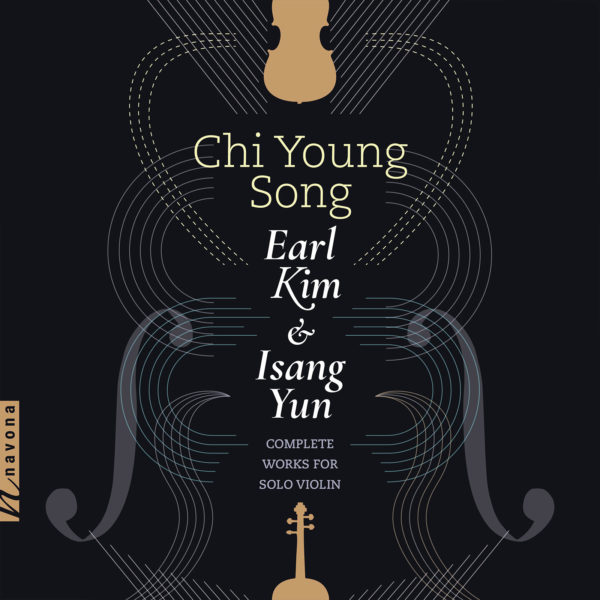Alle Werke für Solovioline der beiden Komponisten Earl Kim und Isang Yun hat der Geiger Chi Young Song eingespielt. Bei allen drei Beteiligten handelt es sich um Künstler koreanischer Abstammung, die aber in den USA bzw. Deutschland leben bzw. lebten.
Als Schüler von Arnold Schönbergs hat Earl Kim eine unverwechselbare kompositorische Sprache entwickelt. Er interessierte sich nicht sonderlich für den Serialismus und benutzte ihn gegebenenfalls flexibel im Sinne von Alban Berg. Im Übrigen ist seine Musiksprache durch und durch europäisch. Allenfalls in der sparsamen Verwendung musikalischer Elemente, der Präzision der Notation und dem anmutig-zurückhaltenden Ton seines Werkes mag man koreanische Einflüsse erkennen. Kim schrieb die 12 Capricen für Violine solo 1980 im Auftrag von Itzhak Perlman. Als Lehrstücke sind die Capricen sehr abwechslungsreich, so sind einige seriell (3, 4, 8, 9), andere atonal nicht-seriell (1, 6), der Rest frei tonal. Bei den Vorgaben ist Kim äußerst genau: Artikulation, Dauer und sogar der Art und Weise, wie eine wiederholte Phrase zu spielen ist, sind notiert.
Isang Yun hat 225 Jahre nach Bach das königliche Thema sozusagen mit asiatischen Traditionen angehaucht, indem er sieben Variationen mit ostasiatischen Klanggesten verfasste, bevor er zum oktavierten Original zurückkehrt. Bei den beiden Sätzen der Kontraste stehen sich im ersten strenges Pizzicato und weicheres Legato gegenüber, während im zweiten Filigranes mit Gesanglichem bis zum Ende sich steigernd konfrontiert wird. Ebenfalls Übungswerke sind die fünf Stücke für seine Nichte Li-Na.
Song, der wie seine beiden komponierenden Landsleute auch persönlich den Spagat zwischen Abstammung und Lebensmittelpunkt kennt, gibt diesen Kompositionen mit westlicher Technik und aus ebensolchem Lebensgefühl heraus dennoch auch den Hauch asiatisches Flair mit, dass man der Musik entnehmen mag. Mit sicherer technischer Handhabung meistert er diese Werke. Die besondere Herausforderung kommt bei Kim vor allem aus der linken Hand, so hat es Song jedenfalls in seiner Universitätsarbeit festgemacht, da atonale, dissonante und serielle Abschnitte einem klassisch geschulten Geiger weniger in der Hand liegen. Diese intensive Auseinandersetzung, die sowohl die gedankliche als auch die praktische Seite betrifft, zeigt sich in einem makellos dargebotenen Capricen Zyklus ebenso wie in der Interpretation der Werke von Isang Yun.
All works for solo violin by the two composers Earl Kim and Isang Yun were recorded by violinist Chi Young Song. All three participants are artists of Korean descent, but live or lived in the United States or Germany.
A student of Arnold Schoenberg, Earl Kim developed a distinctive compositional language. He was not particularly interested in serialism and, if he was, he used it flexibly in the sense of Alban Berg. For the rest, his musical language is thoroughly European. At most, one might recognize Korean influences in the sparing use of musical elements, the precision of notation, and the gracefully restrained tone of his work. Kim wrote the 12 Caprices for solo violin in 1980, commissioned by Itzhak Perlman. As instructional pieces, the caprices are very varied, so some are serial (3, 4, 8, 9), others atonal non-serial (1, 6), the rest free tonal. In the specifications, Kim is extremely precise: articulation, duration, and even the way to play a repeated phrase are notated.
225 years after Bach, Isang Yun breathed Asian traditions into the royal theme, so to speak, by writing seven variations with East Asian tonal gestures before returning to the octave original. In the two movements of contrasts, the first juxtaposes strict pizzicato with softer legato, while the second confronts filigree with songfulness that builds to the end. Also practice works are the five pieces for his niece Li-Na.
Song, who, like his two composing compatriots, also personally knows the balancing act between origin and center of life, nevertheless gives these compositions a touch of Asian flair with Western technique and from just such an attitude to life that one may take from the music. He masters these works with sure technical handling. The special challenge for Kim comes above all from the left hand, at least that is what Song determined in his university work, since atonal, dissonant and serial sections are less in the hand of a classically trained violinist. This intensive examination, which concerns both the intellectual and the practical side, is evident in a flawlessly performed Caprices cycle as well as in the interpretation of the works of Isang Yun.


















